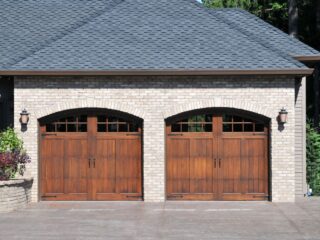
When it comes to sliding closet doors, having a reliable and sturdy track is essential. The track serves as the foundation for smooth and effortless movement, allowing you to easily access your wardrobe without any hassle. Whether you’re renovating your home or simply looking to upgrade your existing closet doors, finding the right track is crucial for optimal functionality.
A high-quality track for sliding closet doors ensures that they glide effortlessly along the designated path. It provides stability, preventing the doors from derailing or getting stuck during operation. Additionally, a well-designed track helps minimize noise and vibrations, creating a quiet and serene environment in your living space.
There are various options available when it comes to tracks for sliding closet doors. From traditional bottom-mounted tracks to modern top-hung systems, each option offers its own unique benefits. Depending on your specific needs and preferences, you can choose between different materials such as aluminum or steel tracks.
- Weight Capacity: One of the first aspects to consider is the weight capacity of the track. Different closet doors have varying weights, so it’s crucial to choose a track that can handle the load without any issues. Make sure to check the specifications provided by manufacturers to ensure compatibility.
- Material and Durability: The material of the track plays a vital role in its durability and longevity. Common materials include aluminum, steel, and plastic. Aluminum tracks are lightweight and resistant to rust, making them a popular choice. Steel tracks offer added strength but may require regular maintenance to prevent rusting. Plastic tracks are affordable and easy to install but may not be as durable as their metal counterparts.
- Track Profile: Another factor worth considering is the profile or shape of the track. There are typically two options available – top-mounted and bottom-mounted tracks. Top-mounted tracks offer a sleeker look as they remain hidden from view when the doors are closed, while bottom-mounted tracks provide stability and support for heavier doors.
Track for Sliding Closet Doors
- Standard Single Track:
The most common type of track used for sliding closet doors is the standard single track. This track consists of a long metal or plastic rail that runs along the top or bottom of the door frame. It provides stability and support for the doors, allowing them to glide open and closed with ease. Standard single tracks are versatile and can accommodate various door sizes and weights.
- Bypass Track:
If you have limited space in your room, a bypass track system might be the perfect solution for your sliding closet doors. This type of track allows two or more doors to slide past each other, maximizing space utilization by eliminating the need for door swing clearance. Bypass tracks are especially popular in small bedrooms or tight storage areas where every inch counts.
- Bi-Fold Track:
Bi-fold doors consist of multiple panels that fold in half when opened, creating an accordion-like effect. To facilitate this folding motion, bi-fold doors require a specialized bi-fold track system. This track features hinges that allow smooth movement as the panels fold inward or outward. Bi-fold tracks are ideal for closets with wide openings as they provide easy access while minimizing obstruction.

Installing a Track for Sliding Closet Doors
- Measure and Plan: Start by measuring the width of your closet opening to determine the length of the track needed. Take into account any obstructions such as trim or baseboards that may affect the installation process. Once you have the measurements, plan where you want the doors to slide and mark the positions for mounting brackets accordingly.
- Gather Materials: Before you begin, make sure you have all the necessary materials at hand. This typically includes a track kit (available in various lengths), mounting brackets, screws, anchors, and a level for accurate alignment.
- Prepare the Area: Clear out any items from inside your closet and remove any existing doors or obstructions from the opening area. Ensure that the floor is clean and free of debris before proceeding with installation.
- Install Mounting Brackets: Attach the mounting brackets securely to both sides of the closet opening using screws and anchors if required. Make sure they are aligned correctly and level with each other to ensure proper door movement along the track.
- Attach Track: With your mounting brackets in place, it’s time to attach the track itself. Align it with the mounted brackets and secure it using screws provided in your kit. Double-check that everything is level before tightening all screws firmly.
With a well-installed track for sliding closet doors, you can enhance the aesthetics and functionality of your space while enjoying effortless access to your belongings. So roll up those sleeves, gather your tools, and get ready to transform your closet with ease! Maintaining and troubleshooting sliding closet door tracks is essential to ensure smooth operation and prevent any frustrating issues. The track for sliding closet doors plays a crucial role in allowing the doors to slide effortlessly along the opening.





